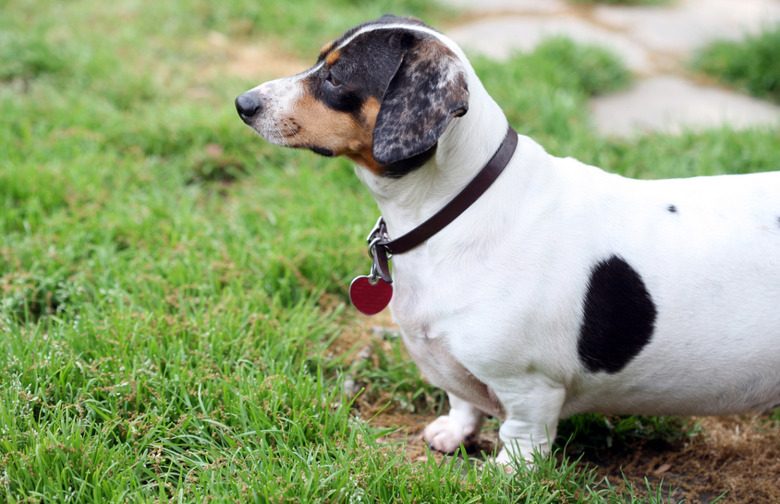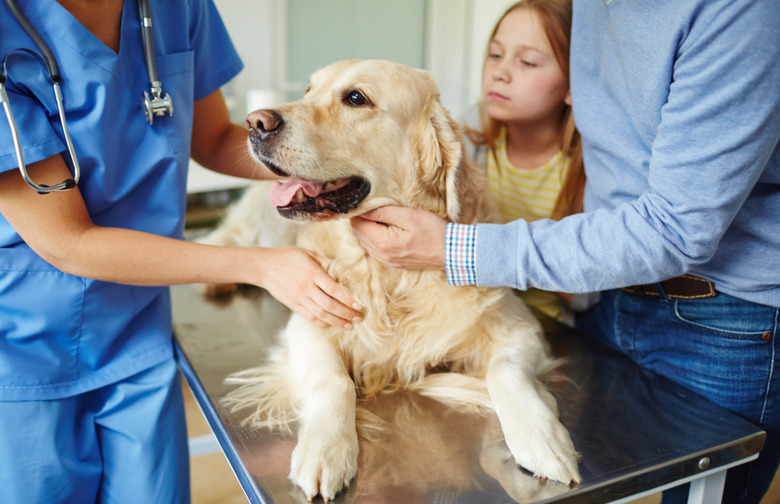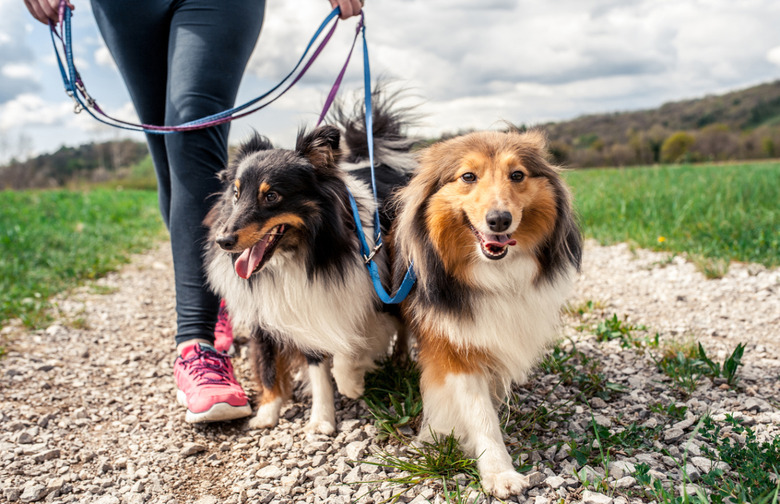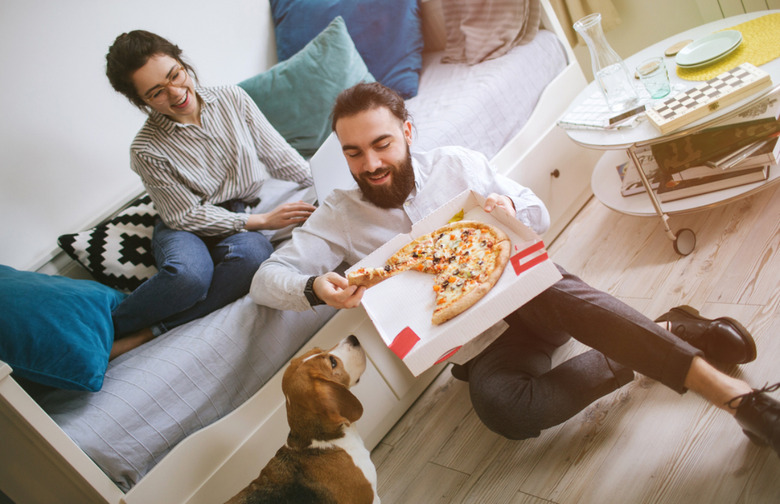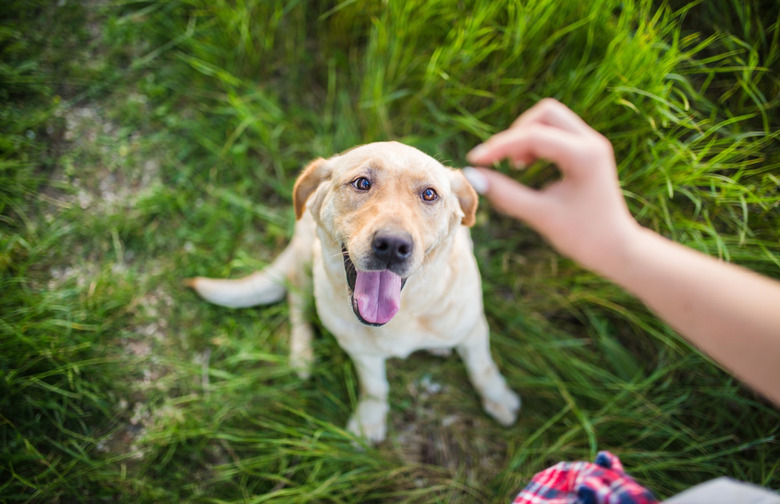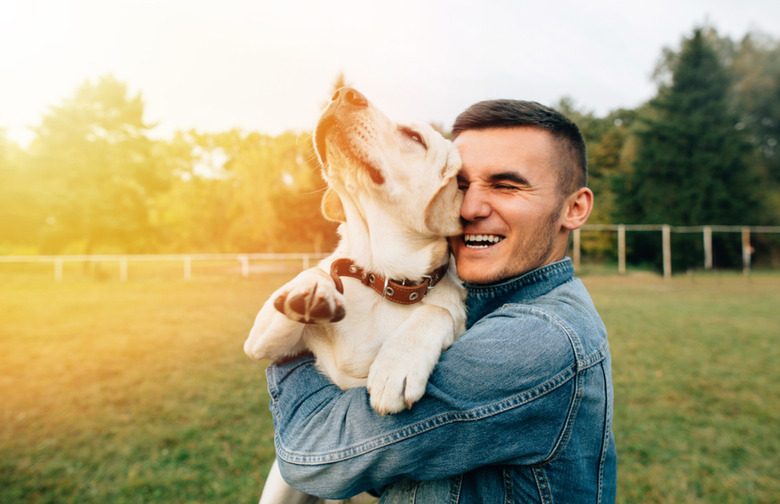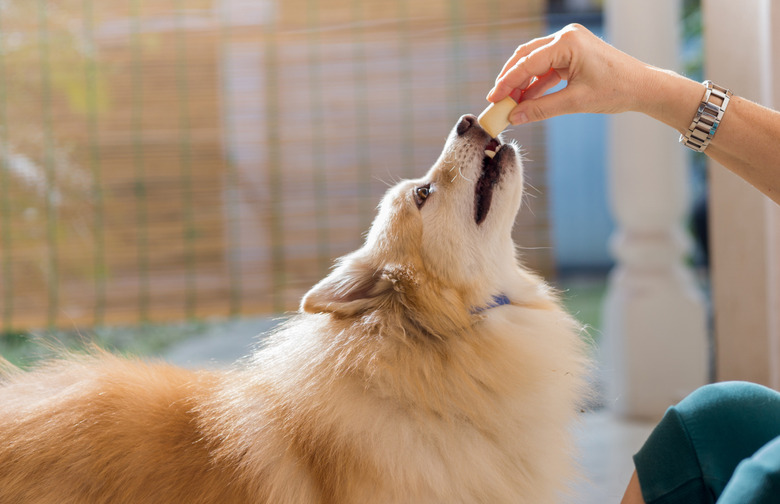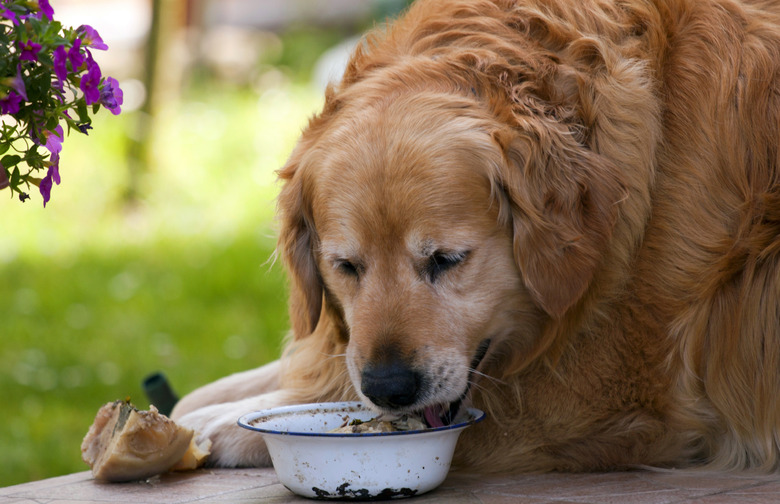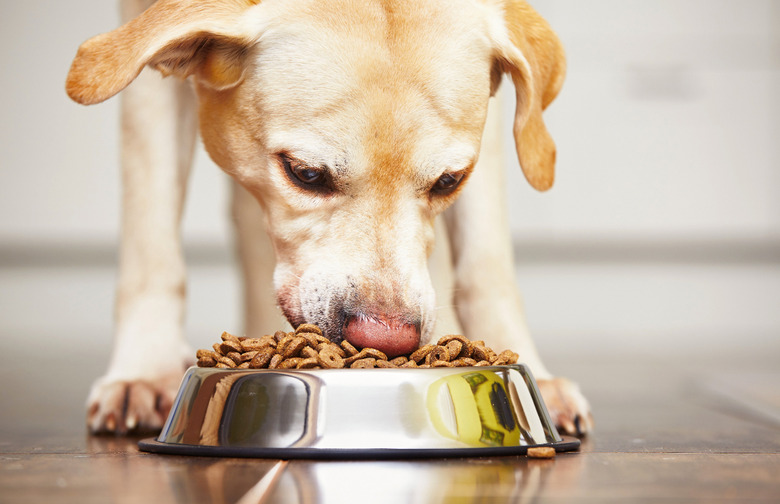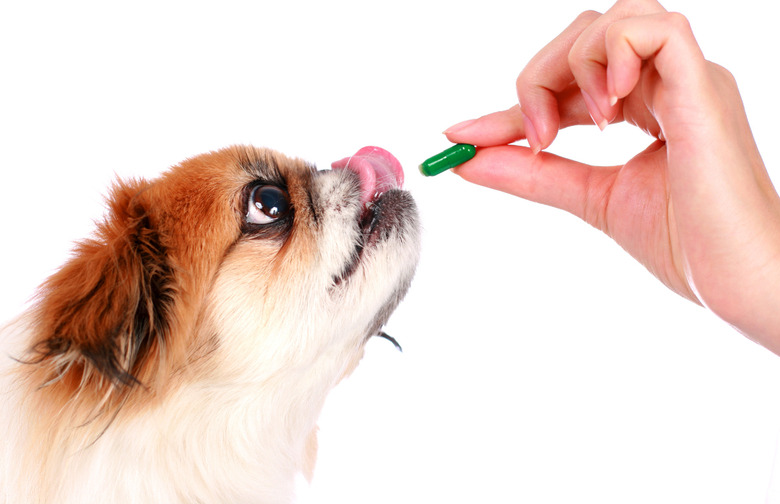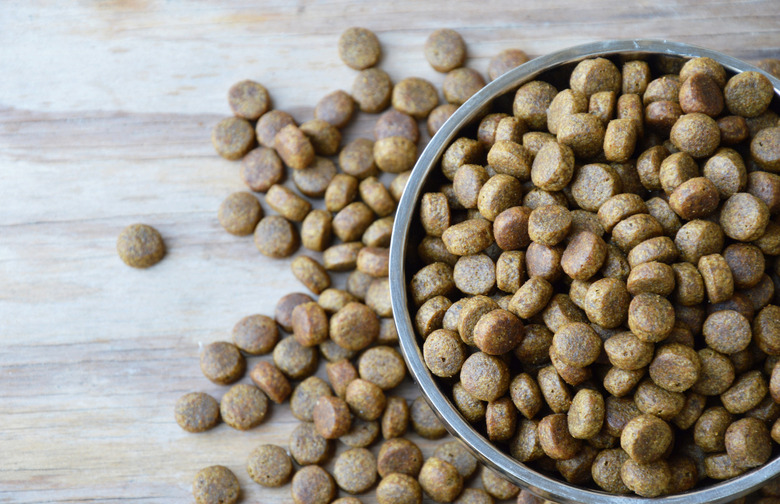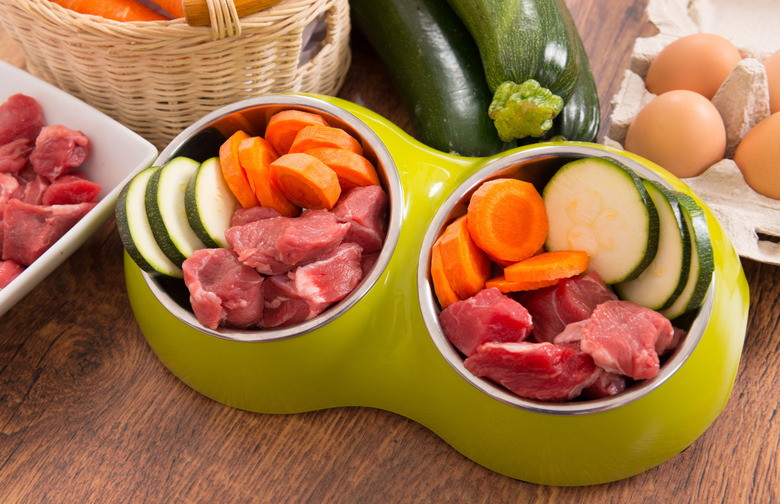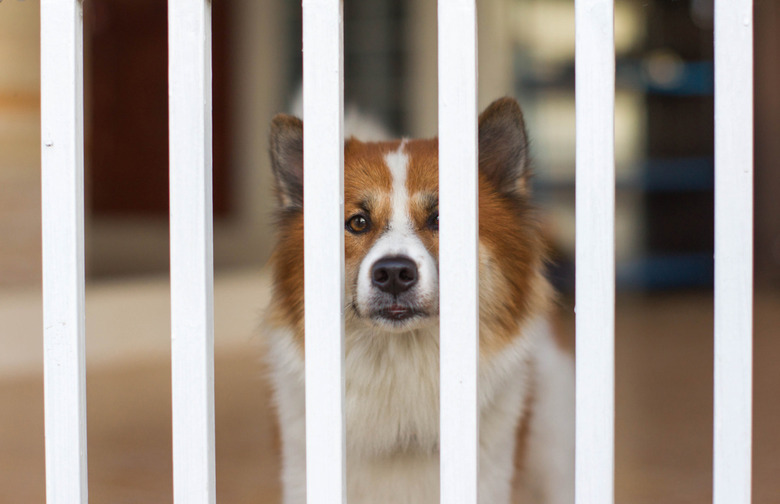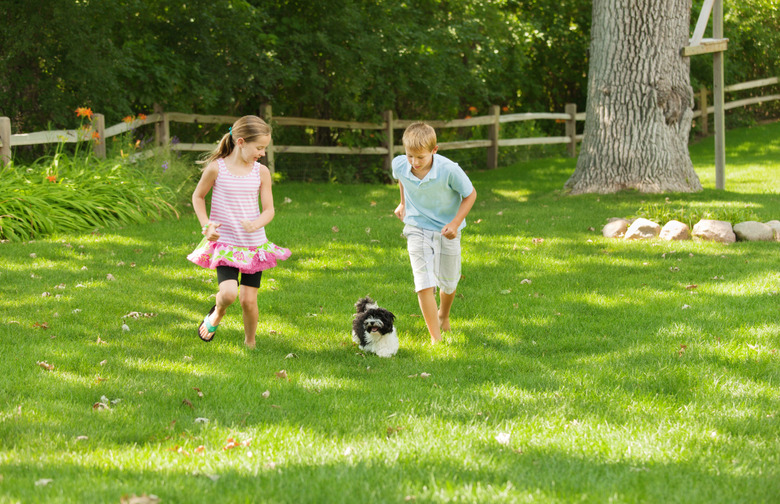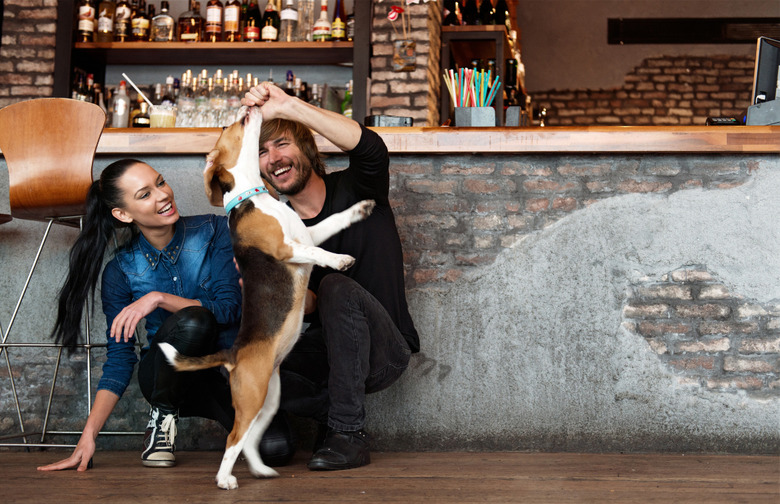How To Put Your Dog On A Diet Slideshow
It's time to face it: Your dog has gained a few. We know it looks super cute to keep him pudgy, but the reality of the health consequences for your best friend is no laughing matter. According to the latest veterinary surveys, over half our nation's dogs and cats are overweight.
Dogs count on us — they trust us to feed them correctly and keep them healthy. It seems America is failing its canine population and letting them fall victim to the same faults we are: Overeating.
The consequences of those layers of puppy flab are imminent and very real. Being overweight can result in your dog experiencing severe arthritis, deadly diabetes, heart disease, and even cancer. When you adopted your pet, you didn't dream of quality time spent at veterinarian's offices, cleaning up sickly indigestion consequences, or carrying a dog that can't walk. You dreamt of days at the park, organizing doggy play dates, enjoying adorable meals together, and spending far too much time playing fetch.
Let those memories last longer by taking care of your pet now. Our tips for putting your dog on a diet can help Tinkerbell shed those debilitating pounds before things get serious.
Figure Out Whether or Not Your Dog Is Actually Overweight
Before imposing any significant lifestyle changes on your furry friend, make sure he actually needs it first. It's very possible that your dog is simply of a larger breed or simply growing if you adopted the little guy at a young age.
One sure way to tell is to try and feel for his backbone and ribs. "If the spine and ribs are difficult to feel, the dog is overweight," said David Gonsky, DVM, medical director of West Loop Veterinary Care in Chicago.
Get a Vet’s Opinion
Once you've confirmed that you think your dog needs a diet, get a professional opinion. The vet will be able to tell you if the cause of your dog's weight gain is medical or if it's dietary, and will also be able to provide you with helpful tips.
While you're there, be sure to ask how much you should feed your pup. Underfeeding and overfeeding are equally dangerous, and you don't want to fall into either!
Go On Walks Together
This is a great way to get both you and Fido more active. Studies show that there are a plethora of health benefits to walking — for you and your dog. The more activity he gets, the healthier he'll be.
Eliminate Table Food
All those crumbs and pizza crusts add up! Despite the fact that there are some foods you should never let your dog have, keeping human food off-limits for your overweight companion could save him hundreds of calories (and tons of indigestion) per day.
Keep Track of Treats
When you're playing with or training your dog, it's much easier to get your dog engaged with a bag of treats in hand. But when you're tossing one at him every five seconds, it's the equivalent of feeding a human throw after throw of Oreo cookies.
Too often, people feed their dogs treats throughout the day, no holds barred. Add all those cookies on top of an already-full meal schedule and you're in for a diet disaster. Be mindful of the treats you feed your loved one. He may whine for a while, but we promise — in the long run, he'll thank you.
Reward With Love
Instead of treats, reward your puppy with other positive reinforcements that don't involve food. These could be affirmations such as "good boy!" or new toys like tennis balls. A little attention goes a long way, and actually means more to your canine than the food that's gone in a second.
Give Him Healthier ‘Treats’
If you do need to resort to food incentives to get your dog to listen, try "treats" that aren't going to wreak havoc on his health. For instance, try feeding your dog vegetables or some other tasty superfoods that have health benefits for dogs. If your dog doesn't seem too excited, eat some yourself first to show them they're tasty. Dogs are impressionable creatures. Watching you enjoy a celery stick or two could make him want to do the same — remember what we were saying about your dog's diet making you, healthier, too?
Cut Some Carbs
Unfortunately, despite veterinarians' recommendations that dogs need a large amount of protein, most pets are fed over 60 percent of their calories from carbohydrates. Dog food brands often stuff their recipes with corn, wheat, and other inexpensive fluff. Keep the fluff off your pup's belly by checking the ingredient labels on dog food — look for meats and whole grains over simple, refined carbs.
Feed Him More Often
"Multiple small meals are better than one large meal a day," says Thomas Watson, DVM, veterinarian at Carolinas Veterinary Medical Hospital in Charlotte, North Carolina. Similar to the logic behind the "five small meals a day" recommendation for humans, this dietary trick is meant to stabilize your pet's blood sugar throughout the day. This reduces the intensity of spikes and drops in energy the little guy experiences, too. So you're both winning!
Just make sure you feed him less when you feed him more often. We don't want a five full meals a day fiasco on our hands.
Consider Supplements
Dogs are like people in that they need nutrients to function at their best. Omega-3s have been shown to boost weight loss in humans and they can work the same way for dogs. If your dog is deficient in some nutrient, it could have a detrimental effect on his health. Get your veterinarian's recommendation on which supplements to consider for your pooch.
Buy Better Quality Dog Food
Remember what we were saying about carbs? Well, dog food brands don't stop there with skimping on nutritional value. Click here for our comprehensive list of the best (and the worst) foods on the market.
Consider Low-Calorie Options
If you can't bear feeding your dog less, try feeding him differently. There are specially made dog food blends for pups with low calorie needs. While they might be a bit more expensive, remember that your dog is worth the investment. Remaining trim could help him live his best, liveliest life!
Lock Him Out While You Cook
Even if you don't mean to, it's likely that you drop a whole lot of food on the floor when you cook. Not only can this be dangerous while you're cooking foods that aren't dog-friendly, but it also can result in the little guy consuming more food than he should be getting his hands on. Let him out in the backyard until you're done or invest in a doggy gate for the entrance to your kitchen.
Let Him Hang Out in the Backyard
Speaking of your backyard, it's a great, activity-promoting place for him to spend some time. When he hangs out outside, he's likely to run around and explore. Those extra steps and standing time pay off. People only need 30 minutes of moderate activity each day to receive health benefits, and dogs are pretty similar! They were made to move — not to lie on the couch all day until you can find time to play.
Take Him With You Everywhere
The perfect excuse to bring your adorable friend with you everywhere you go — who could argue with that? Even small amounts of movement, like walking to your car and back or saying hello to new human friends, can make a big difference in your dog's overall health. Think about it: Otherwise, your dog spends the whole day lying around the house!
That wouldn't be healthy for you, and it's not healthy for him, either. Give him some love and take him in the car. You could even take him on a doggy date to some of your favorite restaurants — they sell dog-friendly treats!

